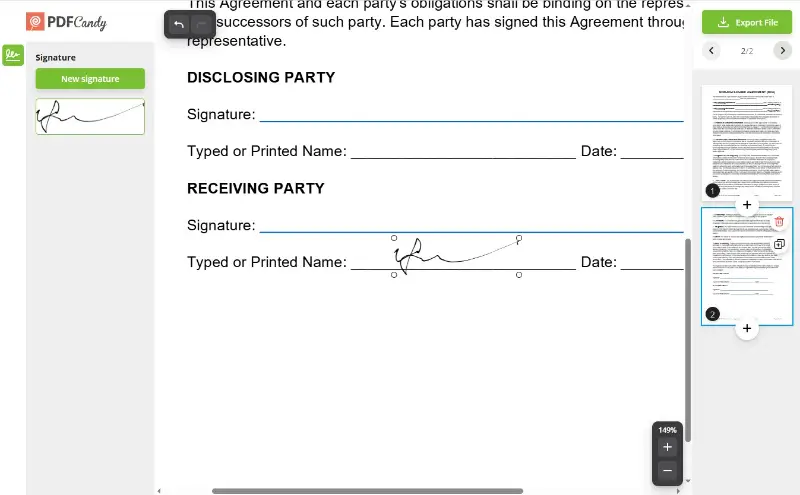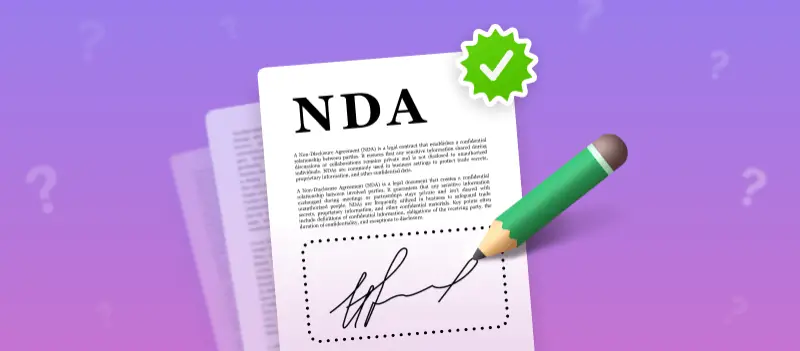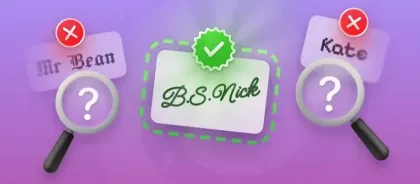Why would you sign an NDA? This question often arises when entering into new business relationships, collaborations, or employment opportunities.
In this article, we’ll explore the main reasons to sign an NDA, how it safeguards both parties, and why it’s a critical step in maintaining confidentiality in personal and professional paperless dealings.
What is an NDA agreement?
An NDA (Non-Disclosure Agreement) is a legally binding document designed to keep information private. Companies, startups, and even individuals use it to prevent sensitive data from being shared without permission.
NDAs are not one-size-fits-all. They can take different forms depending on the situation:
- Unilateral NDA – only one party is obligated to maintain secrecy, often utilized when an employer shares proprietary details with a worker.
- Mutual NDA – both parties agree to keep the exchanged information confidential and protected, common in partnerships or joint ventures.
- Multilateral NDA – involves multiple entities and is usually applied in complex projects where several companies collaborate.
Why does it matter?
Without an NDA, sensitive business strategies, client data, or unique inventions can be exposed, risking financial loss and reputational damage. By signing, all parties commit to maintaining confidentiality and respecting the rules outlined in the contract.
In short, an NDA is a powerful instrument for protecting valuable knowledge and fostering secure collaborations.
How do NDAs work?
- Definition of Confidential Information – what is considered secret.
- Exclusions – details that are already public or lawfully obtained elsewhere.
- Obligations – how the recipient must handle the protected information.
- Duration – the timeframe for which the agreement remains valid.
Do NDAs expire?
Yes, an NDA can have a limited lifespan. Most contracts include a term clause that specifies how long obligations will apply.
- In many commercial arrangements, this period lasts one to five years, covering both the active cooperation and a post-project phase.
- When dealing with trade secrets or particularly sensitive data, the agreement may stipulate ongoing protection, remaining effective as long as the information retains its confidential character.
If no timeframe is mentioned, courts may interpret the obligation as lasting for a “reasonable” period or, in some cases, find the clause unenforceable. For clarity, it’s essential to define the duration when you draft or sign an NDA.
Key reasons to sign an NDA: table
| Reason | Significance | Illustrative Example |
|---|---|---|
| Safeguarding proprietary knowledge | Blocks rivals or outsiders from exploiting exclusive insights. | A tech startup shares its innovative algorithm with investors. |
| Preserving intellectual assets | Shields inventions, blueprints, and original creations from misuse. | A product designer presents a concept to a manufacturing partner. |
| Strengthening collaborative relationships | Enhances confidence between parties by establishing strict secrecy terms. | Two firms team up on a research initiative. |
| Minimizing legal risks | Grants a solid basis for action if confidential data is exposed. | A former employee unlawfully releases client records. |
| Defining obligations | Specifies duties, ensuring both sides understand what must remain private. | A consultant gains access to sensitive operational reports. |
| Preventing information leaks | Reduces the chance of accidental or deliberate disclosure to the public. | A marketing agency handles unreleased campaign materials. |
| Ensuring competitive advantage | Keeps strategic plans and market approaches away from potential adversaries. | A company discusses expansion strategies with external advisors. |
| Protecting client relationships | Maintains trust by securing customer details and communication records. | A freelancer works with a brand that shares consumer data. |
| Facilitating negotiations | Allows parties to share critical details freely while reducing exposure risks. | Businesses exchange confidential terms during merger talks. |
What are NDAs used for?
Employment Agreements
Companies often ask employees to sign NDAs to prevent internal data—such as client lists, procedures, or upcoming initiatives—from being revealed externally.
Strategic Alliances
When organizations cooperate, an NDA secures confidential knowledge, financial records, or future plans throughout the partnership.
Product Innovation
Inventors use NDAs to guard prototypes, research outcomes, and technical blueprints when dealing with investors, manufacturers, or subcontractors.
Consulting and Freelance Engagements
Independent specialists frequently access protected materials. An NDA clarifies their obligation to handle such information with discretion.
Corporate Acquisitions
During buyouts or mergers, businesses exchange sensitive documentation. An NDA prevents leaks that might compromise negotiations or influence market value.
Creative Collaborations
Artists, authors, and filmmakers may employ NDAs to stop early concepts, drafts, or other original work from circulating without authorization.
How to sign an NDA securely?
Properly executing an NDA contract is as important as drafting it. A poorly signed document might be considered invalid, leaving sensitive data unprotected. To ensure authenticity and legal strength, it’s essential to follow a secure process.
Use Trusted Digital Tools
Instead of printing, signing, and scanning, you can sign NDAs electronically with a reliable online service. PDF Candy offers an easy and safe way to add legally valid signatures. The platform allows you to:
- Upload your NDA in seconds.
- Create or insert a digital signature.
- Save the signed PDF or paper on other format securely.

Verify Identity and Integrity
Before signing, confirm that the NDA comes from a legitimate source.
After you're done, save the finalized version in a secure location—encrypted drives, password-protected folders, or corporate document management systems. Avoid sharing via unsecured email.
Keep Copies for All Parties
Every signatory should receive an identical copy of the completed NDA agreement. This ensures that everyone is aware of the terms and can reference them if needed.
Benefits of NDA agreements: table
| Party | Advantages | Example |
|---|---|---|
| Disclosing Side | Shields proprietary methods, preserves creative assets, and minimizes chances of unauthorized sharing. | A software company provides source code to a development collaborator. |
| Receiving Side | Obtains access to crucial details with defined restrictions, promoting trust and teamwork. | A contractor reviews detailed project blueprints under strict confidentiality. |
| Both Sides | Creates clear legal boundaries, fosters mutual assurance, and supports transparent communication. | Two startups exchange sensitive information during a partnership without concern of misuse. |
Conclusion
Signing an NDA is more than just a formality—it’s a strategic decision to protect intellectual property, maintain trust, and ensure that sensitive information remains secure.
Whether you’re working with a new partner, sharing trade secrets, or discussing innovative ideas, an NDA gives you legal peace of mind.
When you’re ready to sign documents electronically, tools like PDF Candy make the process quick, secure, and hassle-free.




